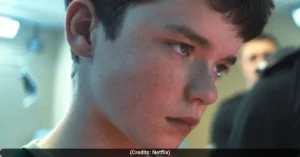Television shows for teenagers have changed a lot over the years. A new Netflix series called Adolescence is making headlines for its raw portrayal of modern teen life. This article explains how teen TV has evolved from the 1980s to today and what makes Adolescence a unique series.
TV Genre Change
Teen TV has moved from simple, fun stories to more complex and realistic portrayals of young lives. In the 1980s, shows focused on light, idealized versions of teenage life. They often had simple plots that resolved within one episode. Although these shows entertained audiences, they did not explore the deeper challenges that teens face.
80s Ideal Image
Television in the 1980s, with programs like Saved by the Bell, presented a carefree view of school life, friendships, and first crushes. Episodes usually featured minor issues that were solved quickly. Occasionally, a special episode touched on serious subjects, but these lessons were short-lived. Teen characters were shown in a simple light without much depth in their struggles.
90s Emotional Layers
The 1990s brought a shift in how teen stories were told. Shows such as My So-Called Life and Buffy the Vampire Slayer offered deeper character development. Teenagers were shown facing real emotional challenges like identity issues, depression, and family conflicts. Story arcs stretched over several episodes, leaving a lasting impression on viewers. This period marked a clear move toward showing teenagers as multi-dimensional individuals.
2000s Dramatic Shift
During the 2000s, teen dramas reached a new level of intensity. Series like The O.C. and Gossip Girl introduced themes such as infidelity, social status, and family drama. At the same time, shows like Skins took a tougher, more realistic approach. They did not shy away from showing issues like drug use, sexual relationships, and mental health problems. Teen TV started to mirror the rough edges of real life even as it retained a stylish, glossy look in some series.
2010s Cultural Change
The 2010s saw further changes with the rise of the internet and social media. Series like 13 Reasons Why and Euphoria pushed boundaries by addressing topics such as suicide, drug abuse, and self-harm. Meanwhile, shows like Sex Education managed to mix humor with serious themes, breaking old stereotypes and creating more inclusive narratives. The lines between films and television began to blur as these series adopted more cinematic visuals and storytelling methods.
Show Adolescence Overview
The new Netflix series Adolescence builds on these past trends and takes them into a modern setting. The series uses an immersive one-shot technique to create a realistic and continuous narrative. Its dialogue and acting feel natural and true to life. The show avoids sensationalism and instead focuses on showing real challenges that teenagers face. The creators have chosen a muted color palette and natural lighting to reinforce the authenticity of the story.
Adolescence is not about dramatized excitement but about presenting a realistic look at teen life. The series shows deeply flawed characters who are trying to find their way in an imperfect world. One of the standout elements is its portrayal of social media as a force that shapes identity. Unlike earlier shows that used social media only as a plot device, Adolescence integrates it into the characters’ lives. This integration highlights how online interactions affect self-image, mental health, and relationships.
Social Media Role
Social media plays a central role in the series. It affects how young people see themselves and others. In Adolescence, a 13-year-old character named Jamie Miller finds his personality and self-esteem distorted by constant online exposure. His struggle with bullying and isolation is shown in a raw and honest manner. The series makes viewers think about the lasting impact of negative online content. It raises questions about whether parents fully understand the digital challenges their children face. This portrayal connects with many viewers who see similar issues in their own lives.
Real-Life Impact
The story of Jamie Miller is a mirror of today’s social reality. His actions, including a tragic incident that leads to a violent outcome, force the audience to reconsider the effects of unchecked social media use. The narrative does not offer easy answers. Instead, it shows how a loving family and good school performance may not be enough to overcome the constant pressures of the digital world. This honest depiction of teen struggles is sparking conversations among audiences and experts alike.
Future TV Trends
The success of Adolescence points to a future where teen TV shows will focus on authenticity. Future series may lean more toward subtle, realistic portrayals rather than dramatic, sensational narratives. There is growing interest in exploring the impact of technology and social media on young lives without exaggeration. This shift indicates that audiences are ready for stories that reflect the genuine challenges of growing up in a digital age.
The new series serves as a reminder that every generation finds its voice through the television shows of its time. Teen TV today is no longer about one-dimensional fun; it is about addressing the real and sometimes harsh truths of adolescence. The evolution of the genre shows that modern viewers appreciate stories that mirror their everyday struggles and triumphs.
Also Read: Netflix’s Adolescence Series Is based on True Story? Check Deets
For more updates on Netflix’s Adolescence, tune in to Vviptimes.















